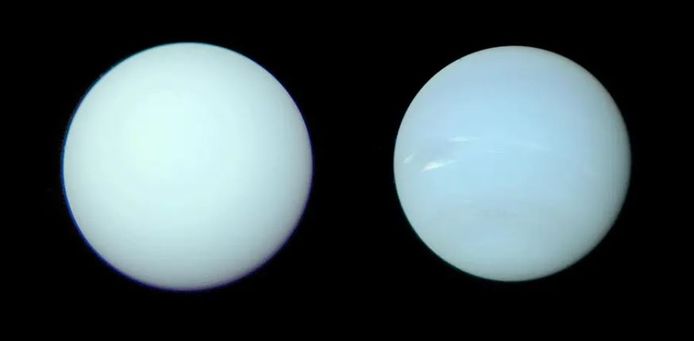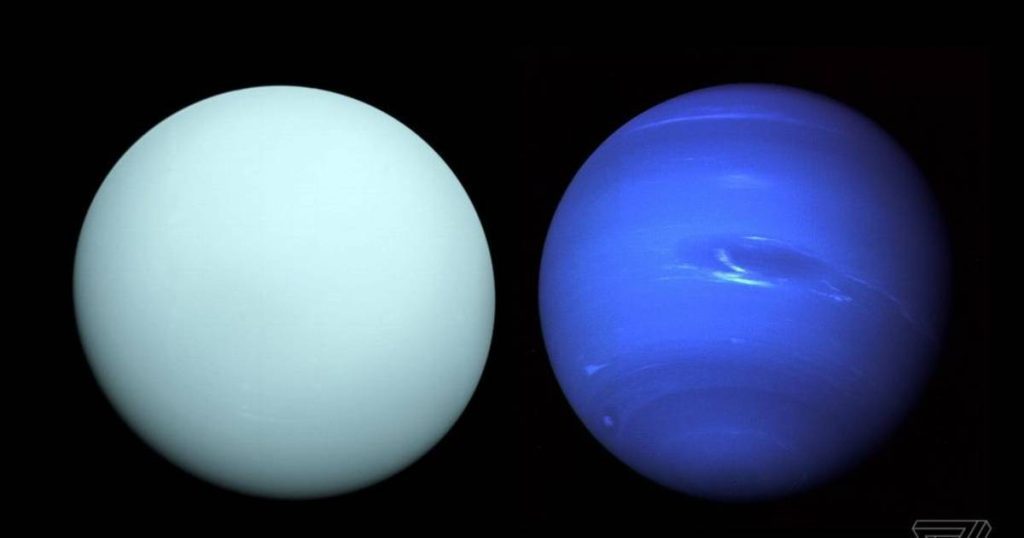It seems that our ideas about the colors of Neptune and Uranus are incorrect. Images from a space mission in the 1980s indicated that Neptune was a rich blue and Uranus was a pale blue-green. But those earlier images of Neptune were digitally edited, according to research by British astronomers. In fact, the two frost giants are both pretty much the same shade of greenish.
Previous images of Neptune have been enhanced to show details of the planet's atmosphere, which changes the planet's true color. “They did something everyone on Instagram did, they changed the colors,” Professor Catherine Heymans, professor of astrophysics at the University of Edinburgh, concluded on Friday. BBC Radio 4 Today.
“They highlighted the blue color to show the features you can see in Neptune's atmosphere. That's why the image looks so blue. But in reality, Neptune is very similar to Uranus.
Astronomers have long known that most images of the two planets do not accurately reflect their true colors, says Professor Patrick Irwin of the International Space Center. Oxford university, who led the research. The previous images were taken by the Voyager 2 space probe, which was launched in 1977 to explore the outer planets of our solar system.
“Although the artificially saturated color was known to planetary scientists at the time – and images were released with captions explaining it – this distinction was lost over time.” Their research was published in the monthly scientific journal Monthly Notices of the Royal Astronomical Society.
No conspiracy
With the help of images from the new Voyager missions, the Hubble Telescope and the James Webb Telescope, Oxford researchers have now been able to show Neptune's true color. The main difference is that Neptune has a slight hint of extra blue, which researchers believe is due to a thinner haze covering the planet. Incidentally, Uranus appears a little greener during the summer and winter, when one of its poles faces the Sun. But in spring and fall, when the sun is above the equator, its color is bluer.

And no, the Royal Astronomical Society's deputy director, Robert Massey, tells the BBC, there has been no conspiracy to deceive the public for years. According to him, editing astronomical images is the most natural procedure. “It would be crazy to look at an astronomical image and not think it has been enhanced. This has to be the case, because that is the way it is processed so they can see things.”
Uranus and Neptune are the two planets farthest from the sun. On average, Uranus is 2.9 billion kilometers away from the sun, and Neptune is 4.5 billion kilometers away from the sun.
The James Webb Telescope captures a stunning photo of an exploding star (and a Flemish man is responsible for it)
NASA telescope sees question mark-shaped object: What is it? (+)
Free unlimited access to Showbytes? Which can!
Log in or create an account and never miss a thing from the stars.

“Coffee buff. Twitter fanatic. Tv practitioner. Social media advocate. Pop culture ninja.”








More Stories
Dutch IT Channel – IT systems will provide ‘tax authorities’ with more room for changes from 2027′
Scientists are mixing bacteria with plastic to create a 'living plastic' that appears to have remarkably good properties
Moroccan Asma Boujibar receives $300,000 from NASA